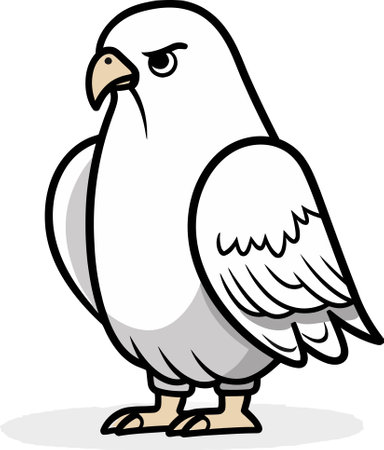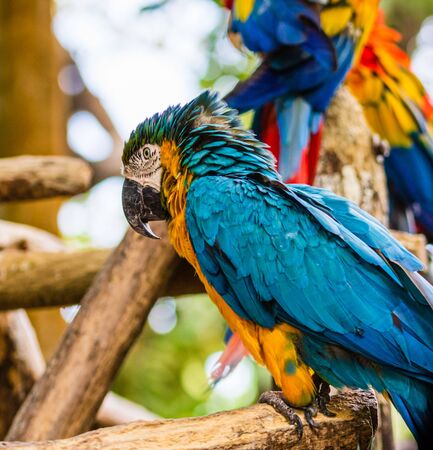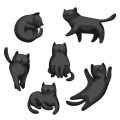Understanding Bird Nutrition Essentials
When it comes to keeping our feathered friends healthy and happy in an American home, understanding the basics of bird nutrition is absolutely essential. Just like us, birds need a well-balanced diet that covers all the key nutrients to thrive. A balanced diet for pet birds typically consists of high-quality pellets, a variety of fresh fruits and vegetables, and occasional seeds or nuts as treats. Essential nutrients include proteins, carbohydrates, fats, vitamins, and minerals—each playing a vital role in supporting your bird’s immune system, energy levels, feather health, and overall well-being. In the United States, many reputable brands offer formulated bird pellets designed to provide most of these nutrients. However, supplementing with safe produce like leafy greens, carrots, apples (without seeds), and berries can enrich their meals and mimic the diverse diet wild birds enjoy. Remember: not all human food is bird-friendly; avoid avocado, chocolate, caffeine, and anything salty or sugary. By learning what makes up a wholesome diet for your specific species—whether it’s a parakeet, cockatiel, or African grey—you’ll be better equipped to spot signs of malnutrition early on and keep your companion chirping cheerfully by your side.
Common Signs of Malnutrition in Birds
Spotting malnutrition in your backyard or companion birds can be tricky, but there are both visible and behavioral clues that every bird lover should know. Early detection is key to helping your feathered friends thrive, whether they’re chirping away in an outdoor aviary or snuggling on your shoulder indoors. Here’s how you can recognize the most common signs that may suggest nutritional deficiencies in your birds:
Visible Physical Signs
| Sign | Description | What It Might Mean |
|---|---|---|
| Dull or Ragged Feathers | Feathers lose their shine, appear frayed, or fall out more than usual. | Lack of essential fatty acids, proteins, or certain vitamins (A, E). |
| Pale Beak and Feet | Beak and feet look lighter or have an unusual color. | Poor calcium, vitamin A, or mineral intake. |
| Overgrown Beak or Nails | Beak or nails grow abnormally long and become misshapen. | Imbalanced diet lacking natural wear from proper foods. |
| Swollen Eyes or Nasal Discharge | Eyes appear puffy; there’s discharge around nostrils. | Vitamin A deficiency affecting mucous membranes. |
| Poor Body Condition | Bones feel prominent when gently handled; bird appears thin despite eating. | Lack of protein or caloric intake. |
Behavioral Clues to Watch For
- Lethargy: Your bird seems less active, spends more time fluffed up, or sleeps during the day instead of playing or singing.
- Poor Appetite: Noticeable drop in interest for food, treats, or favorite seeds.
- Pica: Chewing on non-food items like cage bars, wood, or even paper—sometimes a sign they’re seeking missing nutrients.
- Plucking Feathers: Repetitive self-plucking can indicate stress but is often linked to dietary imbalances as well.
- Noisy Breathing: Wheezing or labored breathing without other illness could point to vitamin deficiencies affecting respiratory health.
The Subtle Signs Matter Too!
Sometimes the earliest signs of malnutrition are subtle: a slight change in song, less enthusiasm at breakfast time, or just seeming “off.” If you notice even small changes in your bird’s appearance or behavior, it’s worth taking a closer look at their diet and consulting with an avian vet. Remember, our backyard songbirds and indoor companions rely on us to spot these clues early—so keep those caring eyes peeled for any hint of trouble among your feathered flock!

3. Species-Specific Warning Signs
Every bird species has its own unique way of showing when something is off with their diet, and as loving bird parents, its important to recognize these subtle signs. Lets take a look at some of the most popular pet birds in American homes and explore the specific symptoms that could signal malnutrition.
Parrots: Hidden Clues in Personality and Plumage
Parrots, including African greys, Amazons, and conures, are known for their vibrant personalities and beautiful feathers. Malnutrition in parrots often shows up as dull or frayed feathers, delayed molting, or even bald patches. You might also notice changes in their energy—maybe your usually chatty companion is quieter than usual or less interested in playtime. Parrots may develop flaky skin around the beak or feet if theyre lacking essential vitamins like A or D.
Cockatiels: Watch the Crest and Cheeks
Cockatiels have expressive crests and rosy cheeks that can give you hints about their health. Malnourished cockatiels may exhibit thinning cheek patches, overgrown beaks, and brittle nails. Some owners notice their bird becoming lethargic or losing interest in singing and whistling. Feather plucking or persistent scratching can also be red flags that your cockatiel’s diet needs attention.
Canaries: Subtle Signs in Songbirds
Canaries are prized for their singing abilities, but a poor diet can make their songs fade. If your canary stops singing, looks puffed up for long periods during the day, or develops scaly skin on the legs and feet, these could all be signs of nutritional deficiencies. Color loss in yellow or orange canaries often points to a lack of specific nutrients like carotenoids.
Finches: Tiny Birds, Big Warnings
Finches may be small, but they’re quick to show distress when not getting the right nutrition. Look for patchy feather growth, constant itching, and weight loss despite regular feeding. A sudden drop in social activity or chirping might also indicate something is wrong with their diet.
Why Knowing These Signs Matters
Each bird species has evolved unique dietary needs, so understanding these warning signs helps you catch problems early before they affect your feathered friend’s quality of life. If you notice any of these symptoms in your birds at home—whether it’s a sassy parrot, cuddly cockatiel, cheerful canary, or active finch—it’s time to take a closer look at what’s in their food bowl.
4. Root Causes of Malnutrition
When we look at malnutrition in birds, especially our backyard flocks and pet companions here in the U.S., its usually not about neglect, but rather misunderstandings about their dietary needs. Lets explore some of the common culprits behind inadequate bird nutrition that many American bird lovers might encounter.
Seed-Heavy Diets: A Common Pitfall
Seeds are often seen as a staple for pet birds, but a diet based solely or primarily on seeds can lead to serious nutritional deficiencies. Seeds tend to be high in fat and lack essential vitamins and minerals, which can cause long-term health issues if not balanced with other foods.
Misguided Treats and Snacks
Its natural to want to spoil our feathered friends with treats, but many popular snacks—like bread, salty crackers, or processed human foods—offer little nutritional value and can even be harmful in excess. Its important to remember that what feels like a treat for us might actually disrupt a bird’s delicate nutritional balance.
Lack of Fresh Produce
Many American bird owners overlook fresh fruits and veggies, either because theyre unsure whats safe or they underestimate their importance. Birds benefit from a wide variety of produce, which supplies vital nutrients not found in seeds alone.
Unintentional Imbalances: The Role of Supplements
Sometimes, well-meaning owners overuse vitamin or mineral supplements without consulting an avian vet. This can lead to imbalances just as dangerous as deficiencies, especially when birds are already getting some nutrients from fortified foods.
Typical Causes of Bird Malnutrition in the U.S.
| Cause | Description | Example/Tip |
|---|---|---|
| Seed-only diet | Lacks variety and essential nutrients | Add pellets and fresh produce daily |
| Too many treats | High-calorie, low-nutrient snacks replace healthy food | Use healthy treats like apple slices sparingly |
| Lack of produce | Missing key vitamins/minerals found in fruits & veggies | Offer chopped leafy greens or berries regularly |
| Poor supplement use | Over-supplementing causes toxicity or imbalance | Consult an avian vet before adding supplements |
| Misinformation/old habits | Following outdated advice or myths about bird diets | Stay updated with trusted avian resources and professionals |
Understanding these root causes helps us adjust our care routines so our birds can thrive—whether theyre lively parakeets in the living room or a flock of hens pecking around the backyard coop. By focusing on a balanced diet rooted in current avian nutrition science, we give our feathered family members the best chance at vibrant health.
5. How to Fix and Prevent Malnutrition
If you’ve noticed signs of malnutrition in your bird, don’t worry—there are practical steps you can take to help your feathered friend regain health and vitality. Here’s how you can improve your bird’s diet using accessible foods, supplements, and a few easy changes in routine.
Start with Balanced Bird Food
Begin by offering a high-quality, species-appropriate pellet as the staple of your bird’s diet. Pellets provide consistent nutrition that seeds alone often lack. Look for brands recommended by avian vets and avoid those with artificial colors or excess sugar.
Add Fresh Fruits and Veggies
Just like us, birds benefit from variety! Introduce fresh, bird-safe vegetables like carrots, leafy greens, bell peppers, and broccoli. Fruits such as apples (without seeds), bananas, and berries can be great treats. Always wash produce thoroughly and cut it into manageable pieces.
Easy Supplement Ideas
Sometimes, even the best diet needs a boost. Calcium supplements (like cuttlebone or mineral blocks) are important for bone health, especially for laying hens. A sprinkle of vitamin powder—formulated specifically for birds—can support immune function during times of stress or recovery.
Gradual Diet Transitions
If your bird is used to an all-seed diet, switch things up slowly to avoid digestive upset. Mix new foods with familiar ones and increase the proportion over time. Patience is key; some birds need weeks to accept new tastes!
Encourage Healthy Habits
Make mealtime fun by offering food in puzzle feeders or hiding treats around the cage to stimulate natural foraging instincts. Clean food and water dishes daily to prevent illness and always remove uneaten fresh foods after a couple of hours.
Consult Your Avian Vet
No two birds are exactly alike. For tailored advice—especially if your bird shows ongoing symptoms—reach out to an avian veterinarian. They can recommend specific diets or tests to ensure your bird is on the path to wellness.
By making these simple adjustments and staying observant, you’ll help your feathered companion thrive in their homey, happy flock!
6. When to Call the Vet
If your feathered friend is showing signs of malnutrition despite your best efforts—think persistent weight loss, fluffed-up feathers, lethargy, or changes in droppings—it’s time to call in a professional. Malnutrition can sneak up on even the most attentive bird parents, and some symptoms may signal deeper health concerns that only a vet can diagnose. Don’t wait for a crisis; birds are masters at hiding illness until it’s advanced.
Recognizing Red Flags
Some warning signs mean you shouldn’t delay: sudden changes in appetite, difficulty breathing, sitting at the bottom of the cage, or any sign of bleeding or severe weakness. Trust your gut—if something feels off, it probably is.
Finding an Avian Vet Near You
Not all vets are bird experts. Look for an “avian veterinarian” certified by the Association of Avian Veterinarians (AAV). You can search their online directory or ask local bird clubs and pet stores for recommendations. Many American cities have specialist clinics, but if you’re rural, consider telehealth consultations as a first step.
Prepping for Your Visit
When heading to the vet, bring a record of your bird’s diet, behavior changes, and photos of any abnormal droppings or feathers. This information helps the vet get a clear picture quickly. Remember: acting early is the best way to keep your backyard flock or indoor companion chirping happily for years to come!


